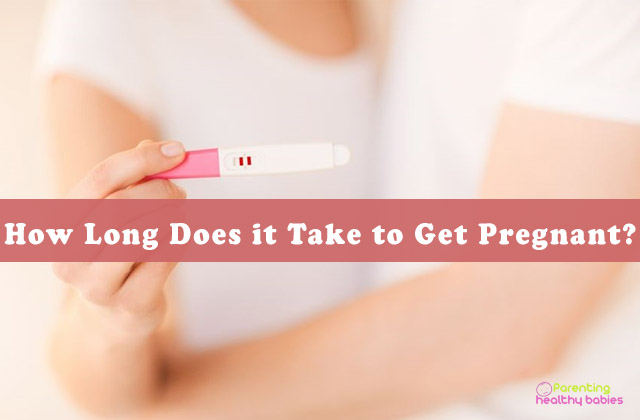The pregnancy third trimester begins in week 28 of pregnancy and lasts until you give birth, which may be around week 40 of pregnancy. In other words, your third trimester lasts from month 7 through month 9 of pregnancy. It’s likely, however, that labor will start a couple of weeks earlier or later, in fact, at least 50 percent of all babies are latecomers. If you do make it to (or past) week 40, you can try a few tricks to naturally induce labor on your own. But once you reach week 42 of pregnancy, you’ll be officially considered overdue, at which point your doctor will induce labor if it doesn’t begin on its own.
It may feel as if there’s no way your belly can get any bigger, but there’s no doubt about it, it will get bigger over the course of the pregnancy third trimester; a lot bigger. In the meantime, hang in there! You’re almost to the finish line. Your little one will get a whole lot larger in the third trimester, growing from about 2 1/2 pounds and 16 inches long in week 28 of pregnancy to between 6 and 9 pounds and 19 to 22 inches long in week 40. Indeed, your baby is growing fast, so don’t be surprised if his increase in size along with a decrease in living space leads to some serious kicks and pokes in your gut.
Amidst all this happiness and anticipation, you must not forget that you and your baby are most vulnerable at this stage too. You are not exempted from the bodily complications that pregnant women have to face. In fact, keep in mind that you’ll always be vulnerable to some complication or the other, no matter the stage of pregnancy. In this article, we will discuss 8 common yet risky complications you should know about, if you are in your third trimester of pregnancy.
Top 8 Pregnancy Complications of Third Trimester
Gestational diabetes
Gestational diabetes develops during pregnancy (gestation). Like other types of diabetes, gestational diabetes affects how your cells use sugar (glucose). Gestational diabetes causes high blood sugar that can affect your pregnancy and your baby’s health. Any pregnancy complication is concerning, but there’s good news. Expectant women can help control gestational diabetes by eating healthy foods, exercising and, if necessary taking medication. Controlling blood sugar can prevent a difficult birth and keep you and your baby healthy. In gestational diabetes, blood sugar usually returns to normal soon after delivery. But if you’ve had gestational diabetes, you’re at risk for type 2 diabetes. You’ll continue working with your health care team to monitor and manage your blood sugar.
Preeclampsia
Preeclampsia is a pregnancy complication characterized by high blood pressure and signs of damage to other organ system, most often the liver and kidneys. It usually begins after 20 weeks of pregnancy in women whose blood pressure had been normal. Left untreated, preeclampsia can lead to serious (even fatal) complications for both you and your baby. If you have preeclampsia, the only cure is delivery of your baby. Even after delivering the baby, it can still take a while for you to get better. If you’re diagnosed with preeclampsia too early in your pregnancy to deliver your baby, you and your doctor face a challenging task. Your baby needs more time to mature, but you need to avoid putting yourself or your baby at risk of serious complications. Rarely, preeclampsia develops after delivery of a baby, a condition known as postpartum preeclampsia.
Preterm labor
Premature labor is also called preterm labor. It’s when your body starts getting ready for birth too early in your pregnancy. Labor is premature if it starts more than three weeks before your due date. Premature labor can lead to an early birth. But the good news is that doctors can do a lot to delay an early delivery. The longer your baby gets to grow inside you (right up to your due date) the less likely he or she is to have problems after birth.
Pprom
Preterm premature rupture of the membranes (pprom) is a pregnancy complication. In this condition, the sac (amniotic membrane) surrounding your baby breaks (ruptures) before week 37 of pregnancy. Once the sac breaks, you have an increased risk for infection. You also have a higher chance of having your baby born early.
Placenta problems
The placenta is the organ that nourishes your baby while you’re pregnant. Usually, the placenta is delivered after your baby. However, women with placenta previa have a placenta that comes first and blocks the opening to the cervix. Doctors don’t know the exact cause of this condition. Women who’ve had a previous cesarean delivery or uterine surgery are at greater risk. Women who smoke or have a larger-than-normal placenta are also at greater risk. Placenta previa increases risk of bleeding before and during delivery. This can be life-threatening.
Iugr
Intrauterine growth restriction (iugr) refers to a condition in which an unborn baby is smaller than it should be because it is not growing at a normal rate inside the womb. Delayed growth puts the baby at risk of certain health problems during pregnancy, delivery, and after birth. They include:
- Low birth weight
- Difficulty handling the stresses of vaginal delivery
- Decreased oxygen levels
- Hypoglycemia (low blood sugar)
- Low resistance to infection
- Low apgar scores (a test given immediately after birth to evaluate the newborn’s physical condition and determine need for special medical care)
- Meconium aspiration (inhalation of stools passed while in the uterus), which can lead to breathing problems
- Trouble maintaining body temperature
- Abnormally high red blood cell count
In the most severe cases, iugr can lead to stillbirth. It can also cause long-term growth problems.
Post-term
Post-term pregnancy is the condition of a baby that has not yet been born after 42 weeks of gestation, two weeks beyond the normal 40. Post-mature births can carry risks for both the mother and the infant, including foetal malnutrition. Post-term pregnancy may be a reason to induce labour.
Malpresentation
Malpositions are abnormal positions of the vertex of the fetal head (with the occiput as the reference point) relative to the maternal pelvis. Malpresentations are all presentations of the fetus other than vertex. The fetus is in an abnormal position or presentation that may result in prolonged or obstructed labour.
You need not panic about all these complications happening with you. Just beware of them, take adequate care of yourself and follow your healthcare provider’s advice, for you and your baby’s sake.













